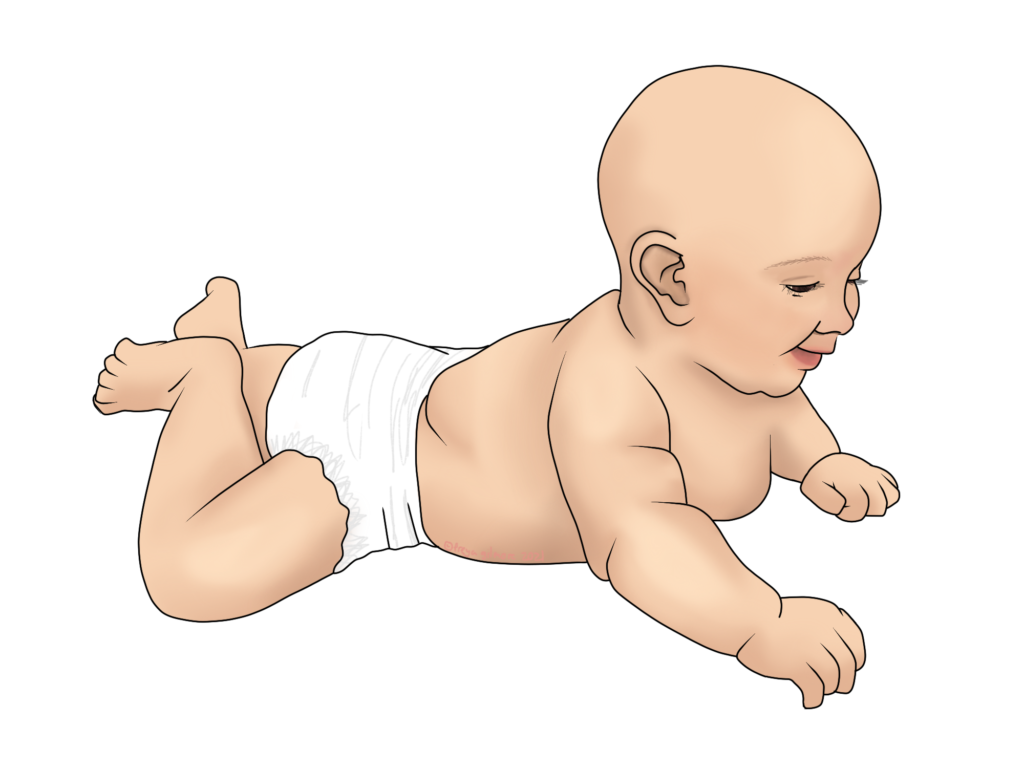One way for medical professionals to keep track of your child’s development is by monitoring milestones. These are specific skills or abilities that babies pick up around a certain age. Some of these windows for “normal” are wider than others, so although it can be easy to get hung up, a call to your GP or health visitor will usually put your mind at ease.
Every child is different, and develops at their own pace.
Head Control
From the very early days, you should see quick development in head control. When held over a shoulder, baby should be able to hold their head up within a few weeks. By two months we expect them to have some control of rotation while laying on their front. By four months, this control should extend to holding their head up and turning while on their front. When supported to sit at this age, they should also be able to keep their head relatively balanced.
Head control is one of the milestones that may be hindered by problems such as torticollis. This is where the muscles on one side of the neck are excessively tight, and may mean that movement is restricted on one side, or even that baby’s head is not held straight. Torticollis may begin in the womb, or be brought on by asymmetries later- for example if baby is always held on the same side to feed. Your osteopath can help release tight muscles and give advice to help speed up baby’s progress.
Rolling Over
Given plenty of time to explore on the floor, babies start rolling from back to front at around 6 months. Rolling front to back can take longer, but both milestones should be reached by 9 months old. Some babies discover these movements by accident, losing balance and toppling over. Others may need some help working it out.
Tummy time can be a difficult exercise to enforce as many babies are easily upset when put on their front. Your osteopath can work with you to find more suitable ways for you to support your baby in tummy time. Some potential solutions are:
- Hold baby on your chest while you recline in a chair or on the sofa
- While sitting back with your knees bent, support baby on your shins so they can see you and aren’t completely flat
- Make an arc of baby’s favourite toys around them to distract them and encourage them to move
Sitting
At six months, baby should be able to sit with a little support. This could be in the form of pillows behind and to the sides, or sitting on your lap. By nine months, sitting should be comfortable without support.
In the early days, encouraging positions other than lying down can help prevent plagiocephaly. Simply adding supportive cushions to a laundry basket can do the job, although you should still supervise your baby while they’re in it. The best position to minimise plagiocephaly is on their front, as excessive time in a “container” can cause other problems.
Crawling
Crawling is one of the milestones where “normal” is a large range. Some babies start crawling (often backwards) at around 6 months old, and others start around their first birthday. Some start bum-shuffling first. This is not a problem, but crawling strengthens the arms and encourages use of the back and abdominal muscles in a way that scooting alone does not.
If tummy time has been a struggle, crawling may take longer to appear. Parents may be reluctant to give their baby enough time on their front if they are prone to reflux. Particularly with young babies, there might only be a small window in which to adopt the position, having eaten too recently or falling too close to the next nap. You can read more about infant reflux here.
You can make an appointment with Beth using the online booking system here.




